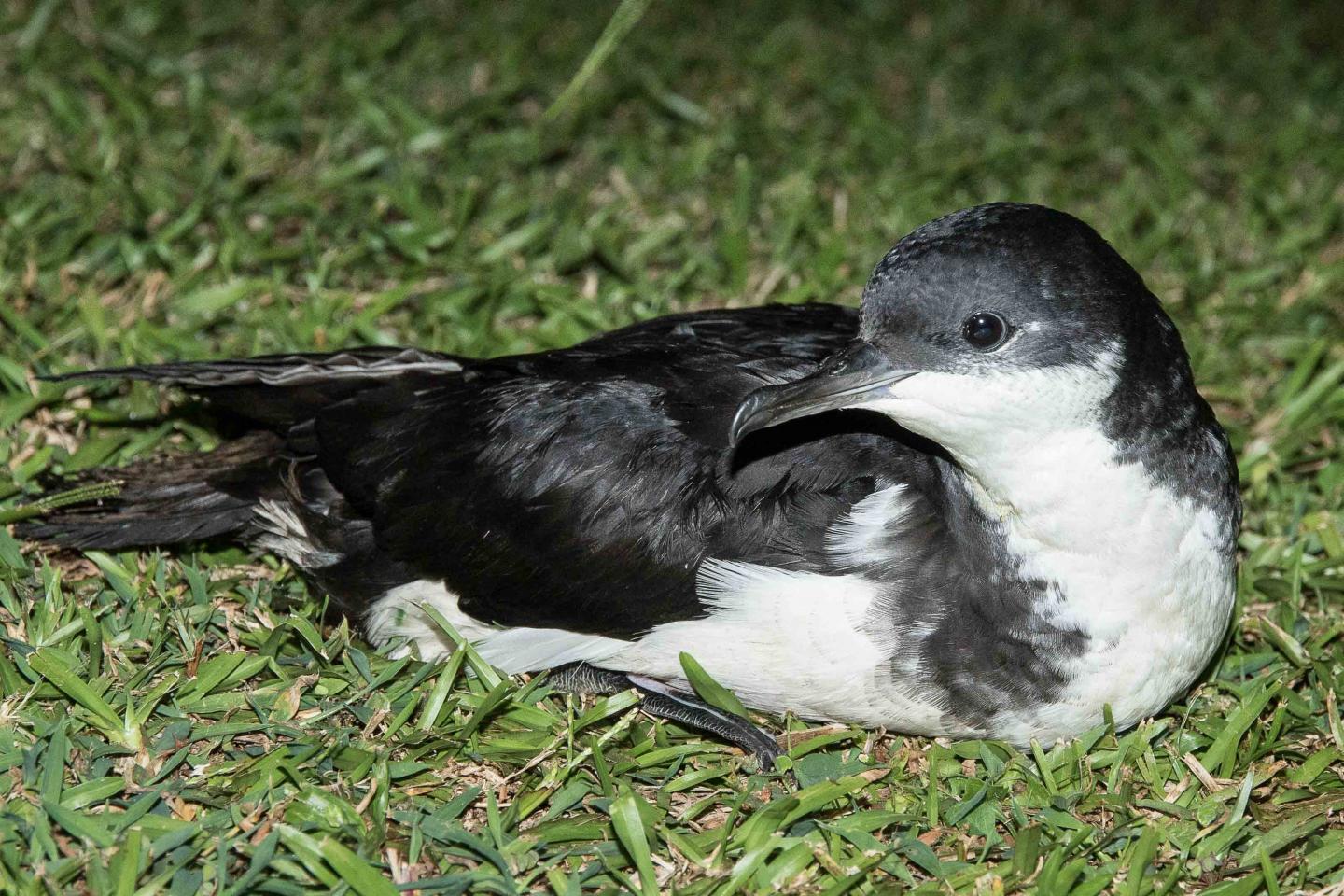
Newell’s Shearwater, photograph by Lindsay Young
Marc Travers (Archipelago Research and Conservation, Hanapepe, Kauaʻi, Hawaii, USA) and colleagues have published in the Journal for Nature Conservation on threats facing Hawaiian birds from collisions with power lines that are followed by road strikes, most notably endemic Critically Endangered Newell’s Puffinus newelli, endemic Endangered Hawaiian Petrels Pterodroma sandwichensis and Wedge-tailed Shearwaters Ardenna pacifica.
The paper’s abstract follows:
“Anthropogenic threats to Hawaii’s birds have resulted in numerous extinctions with many additional species now listed as threatened or endangered. Implementing conservation recovery plans for these birds requires identifying a comprehensive list of threats. Research from outside of Hawaii has shown that avian powerline collisions are one of the greatest anthropogenic causes of mortality. To date, with the exception of endangered seabirds, powerline collisions have not been considered a major threat to most native and endangered birds in Hawaii. This may be because Hawaiian species face a multitude of already identified threats with the clearest causes of mortality (e.g., vehicle collisions) often obscuring evidence of powerline collisions. We report a strong spatial correlation between roads and powerlines which increases the likelihood that birds colliding with powerlines are grounded on roads, where secondary vehicle collisions can confound the primary grounding cause. We recorded flight heights of all birds at powerlines and roads, as well as the frequency of flights directly at powerline and vehicle height. We observed 162 powerline collisions across ten native and endemic birds. We also collected a further 251 grounded native and endangered birds. For each of the grounded birds we evaluated the injuries the bird sustained and the grounding location itself using multiple factors to attribute the primary cause of grounding. Using this system, we classified these birds as follows - powerline collision (69.3%), vehicle strike (9.2%), and uncertain cause of grounding (21.5%). Overall, we confirm that 13 native and endangered species collided with powerlines, including all native and endemic waterbirds, and vehicle collisions were confirmed for three species. Our study clearly demonstrates that birds hitting powerlines can be grounded in roads and then secondarily run over by vehicles, which can obscure the primary cause of grounding. The obfuscation of powerline collision by secondary vehicle strike has previously prevented researchers and managers from identifying powerline collisions as a threat to native and endemic waterbirds. By using the data reported here, the local power company has implemented 170 km of bird-friendly powerline modifications including the removal of static lines, attachment of bird diverters and reconfigurations. These bird-friendly powerline modifications are the first of their kind in the state of Hawaii.”
With thanks to André Raine.
Reference:
Travers. M.S., Driskill, S., Scott, C., Hanna, K., Flaska, S.R., Bache, M. & Raine, A.F. 2023. Spatial overlap in powerline collisions and vehicle strikes obscures the primary cause of avian mortality. Journal for Nature Conservation 75. doi.org/10.1016/j.jnc.2023.126470.
12 October 2023

 Français
Français  English
English  Español
Español